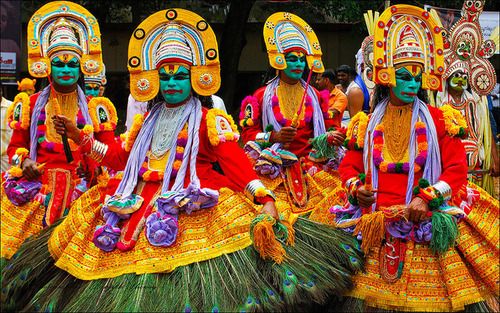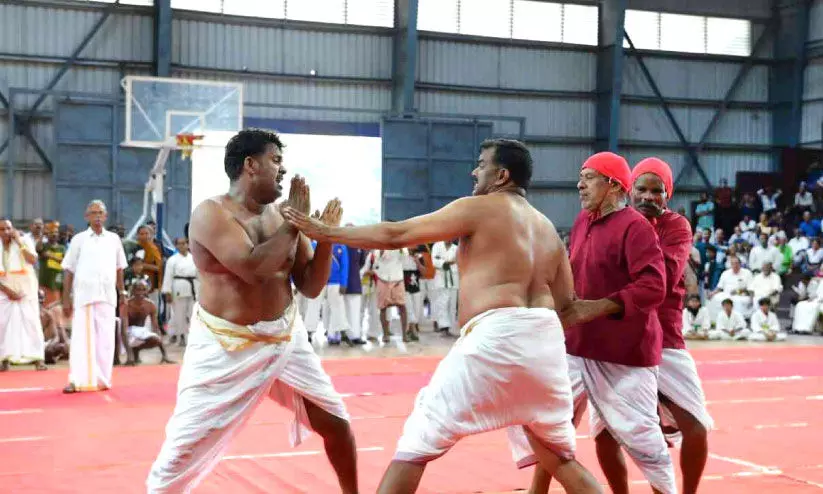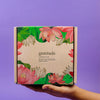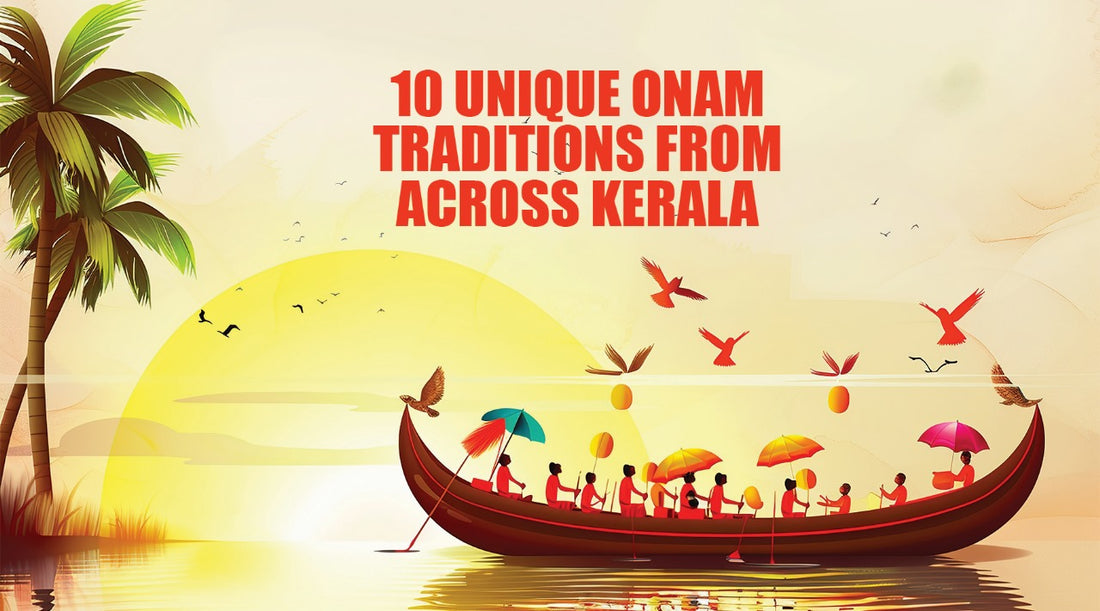Onam, the grand harvest festival of Kerala, is celebrated with immense joy and enthusiasm across the state. It marks the annual homecoming of the mythical King Mahabali, whose reign is believed to have brought Kerala its golden era.

But how is Onam celebrated in Kerala, and why is it celebrated with such reverence?
The festival is a reminder of Kerala’s agrarian roots and is also a time to honor King Mahabali, whose spirit is said to visit his people during this time. Spread over 10 days, Onam signifies the harvest season and is a celebration of unity, prosperity, and cultural heritage.
Here are 10 of the most cherished Onam traditions that highlight the diverse cultural aspects of this grand festival.
1. Pookkalam: The Floral Carpet
One of the most visually striking traditions during Onam is the creation of Pookkalam, intricate flower carpets laid out at the entrances of homes. Each day of the 10-day festival, a new layer of flowers is added to the design, symbolizing prosperity and welcoming King Mahabali.

Communities often hold competitions to see who can create the most beautiful Pookkalam, making it a shared and joyous activity.
2. Onam Sadhya: The Grand Feast
The Onam Sadhya, a grand vegetarian feast, is at the heart of the celebration. Traditionally served on a banana leaf, this meal consists of a variety of dishes—around 26 to 28, depending on the region.

Key dishes include Avial, Thoran, Sambhar, and Payasam. Each dish symbolizes the abundance of harvest and the diverse culinary heritage of Kerala.
3. Vallam Kali: The Snake Boat Race
In the regions near the backwaters, especially in Alappuzha, the Vallam Kali or snake boat race is a sight to behold during Onam. Long, narrow boats with up to 100 rowers glide through the water in rhythmic unison, racing against each other while crowds cheer from the banks. It’s a spectacle of teamwork, strength, and Kerala's deep connection with its waterways.

4. Thiruvathira Kali: Traditional Dance
A graceful and traditional dance form performed by women, Thiruvathira Kali is a group dance where women move in a circular formation around a lamp, accompanied by clapping and singing.

This dance is believed to be a celebration of marital happiness and is one of the most revered cultural aspects of Onam.
5. Pulikali: The Tiger Dance
One of the quirkiest traditions of Onam is Pulikali, a folk art performed primarily in Thrissur. Men paint their bodies to resemble tigers and lions and dance through the streets to the beat of traditional drums.

The playful and vibrant dance is an iconic part of the Onam celebrations, attracting visitors from all over the world.
6. Kazhcha Kula: The Banana Offering
In many parts of Kerala, the offering of Kazhcha Kula or a bunch of bananas is a significant part of Onam. These offerings are made to temples and community centers, symbolizing prosperity and the hope for a bountiful harvest. Bananas are considered sacred and are often distributed to the poor as part of the festival’s charitable activities.

7. Athachamayam: The Royal Procession
Kicking off the Onam festivities is the Athachamayam, a grand procession that takes place in Thrippunithura, near Kochi. The procession showcases decorated elephants, folk dance performances, and floats representing various cultural aspects of Kerala. The parade harks back to a time when the kings of Kochi would march to the Vamanamoorthy temple to celebrate Onam.

8. Onathallu: Martial Arts Display
Onathallu is a traditional form of martial arts, especially popular in northern Kerala, performed during the Onam festival. This combat form is not violent but is a display of agility and strength. In some places, it is accompanied by the martial art Kalaripayattu, showcasing Kerala’s warrior traditions.

9. Onakazhcha: The Harvest Offering
In rural parts of Kerala, Onakazhcha is a community ritual where farmers bring the best of their harvest as offerings to temples. This practice signifies gratitude to the gods for a successful harvest season. In many villages, these offerings are later distributed to the needy, fostering a spirit of giving and togetherness.
10. Maveli and Onapottan: Symbolic Figures
No Onam celebration is complete without the symbolic appearance of Maveli (King Mahabali) and Onapottan. These figures, often portrayed by men in traditional attire, visit homes, blessing families and participating in the celebrations. The portrayal of these characters is a reenactment of the legendary King Mahabali’s return to his people, reinforcing the festival’s mythological roots.
Bringing the Spirit of Onam to Your Home
As families across Kerala come together to celebrate Onam, the traditions of giving and sharing are deeply ingrained in the festival.
In the spirit of this tradition, consider gifting your loved ones something meaningful this Onam. At Gladful, we offer a range of nutritious, clean, and delicious products perfect for your family’s Onam feast. Why not share the gift of health and happiness this Onam with a special gift hamper?
Celebrate Onam with the richness of tradition and the goodness of Gladful. Wishing you all a prosperous and joyful Onam!

 Shop All
Shop All
 NutraMilk Mix
NutraMilk Mix
 Healthy Breakfast
Healthy Breakfast
 Combos
Combos
 Healthy Gifting
Healthy Gifting

1 comment
Woah! I’m really digging the template/theme of this blog. It’s simple, yet effective. A lot of times it’s very difficult to get that “perfect balance” between user friendliness and visual appearance. I must say you’ve done a very good job with this. Also, the blog loads super fast for me on Firefox. Exceptional Blog!